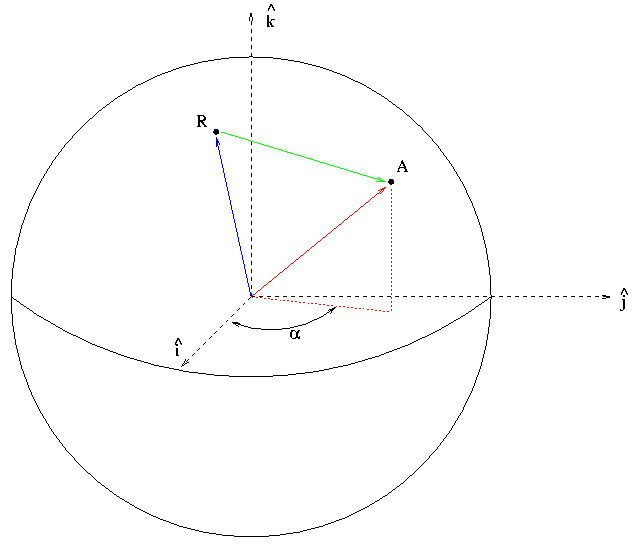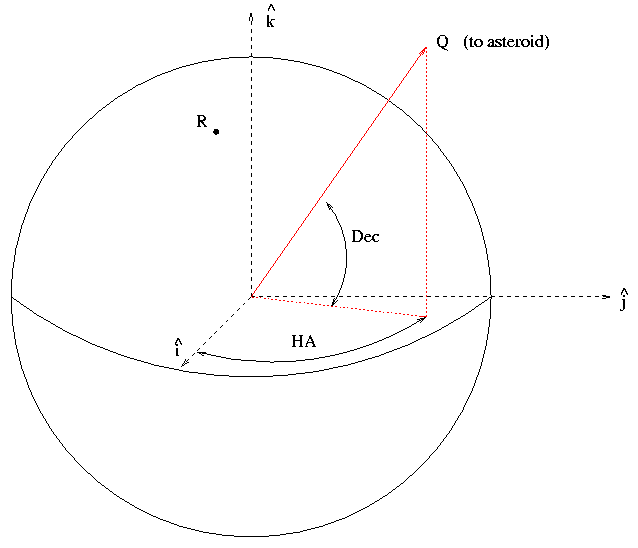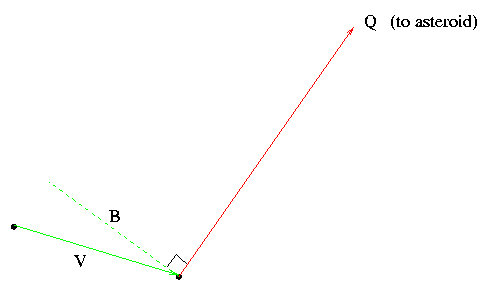
First, one must have two observatories on Earth from which to make simultaneous measurements. Let's call them R, for Rochester, and A, for Annapolis. Set up a coordinate system in which the

The vector distance between the two sites is V = R - A, shown by the green arrow in the figure. One can calculate V if one knows the latitude and longitude of each of the two sites. The angle alpha is the difference in longitudes.
From each site, observe the same asteroid, simultaneously. Measure the position of the asteroid relative to field stars. Find the shift in the asteroid's apparent position as seen from the two sites. Call that angular shift theta, the parallax angle.
We make a slight approximation in this step -- it results in a negligible effect in the final results. The (RA, Dec) position to the asteroid is very nearly the same from both sites; it typically differs by only a few arcseconds. In fact, the (RA, Dec) position would be very nearly the same as seen from ANY place on Earth. Therefore, we can approximate the unit vector Q, which runs from Rochester towards the asteroid as the unit vector running from the center of the Earth towards the asteroid. That vector Q is composed of two angles: the asteroid's Declination, and its Hour Angle as seen from Rochester. Remember, Rochester defines the x-axis of our coordinate system, and the Hour Angle is exactly the projection onto the x-y plane of the angle between Q and the x-axis.

We can't use the entire baseline V between the two observatories unless it was perpendicular to the direction of the asteroid Q. Instead, we need to find B, the component of the baseline V which is perpendicular to Q:

Now that we know the effective baseline B and the parallax angle theta, we can use calculate the distance to the asteroid easily.

The distance to the asteroid is
0.5 * B
dist = -------------------
sin (0.5 * theta)
For the tiny parallax angles we typically measure, one can incur no significant error by using the simpler formula
B
dist = ------------
sin (theta)